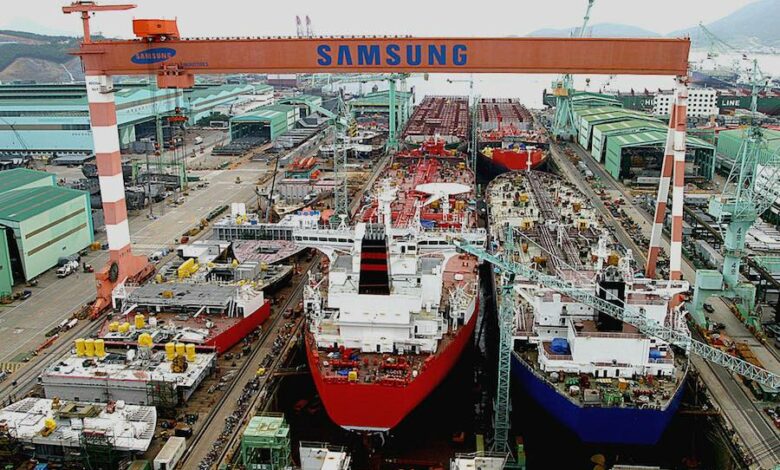Samsung Heavy partners with the Korea Atomic Energy Research Institute to develop nuclear-powered ships

One of the world’s largest shipbuilders is pressing ahead with plans to build nuclear-powered merchant ships.
Samsung Heavy Industries said Wednesday it will partner with the Korea Atomic Energy Research Institute (KAERI) to develop molten salt reactors to power ships as well as market offshore power plants.
The nuclear development goes alongside Samsung Heavy’s already advanced research and development into ammonia- and hydrogen-powered ships, the Korean yard said today, as it races to lead the shipbuilding pack in offering alternative propulsion choices.
Last October another Korean shipbuilding major, Daewoo Shipbuilding & Marine Engineering (DSME) entered into a memorandum of understanding with Kepco Engineering & Construction Company (Kepco E&C), a unit of Korea Electric Power Corporation, to cooperate on the development of floating nuclear power plants. Next door in China, some of the nation’s largest shipyards are also developing similar floating atomic infrastructure.
Nuclear propulsion for ships has been garnering a lot of headlines in recent months. Writing for Splash recently, Mikal Bøe, whose firm CORE-POWER like Samsung Heavy is also developing marine molten salt reactors, suggested that his atomic technology under development does not require the $1.4trn infrastructure-spend for its fuel source like that for synthetic fuels, hydrogen fuel cells or batteries will. A marine molten salt reactor will be 70% cheaper to lease, operate and recycle than any synthetic hydrogen-based fuel, Bøe insisted.
Public perception was cited as the biggest hurdle facing nuclear power at sea in a poll carried by Splash late last year, trumping price and caution from regulatory authorities.

The US had 1 atomic powered cargo ship in the 50s or 60s. It worked and was cheap to run but from memory no one would insure it so was not viable. I wonder if these newer ones will have the same problem?
The same points about technical and economic viability of nuclear-powered ships was raised in IMO july 2013 report on Future powering options. They also started the negative social perception would hinder adoption.
Social perception in the western world is unfortunately still uninformed negative. Hence increasing fossil fuel use instead of more nuclear power stations.
Molten salt reactors use a completely different method to produce power. There is virtually no risk of meltdown and the levels of radiation are safely contained and minor in comparison to conventional nuclear. I believe this technology is viable provided the cost of the hardware comes down to a level that makes it viable. Just my opinion based on what I have read about it.